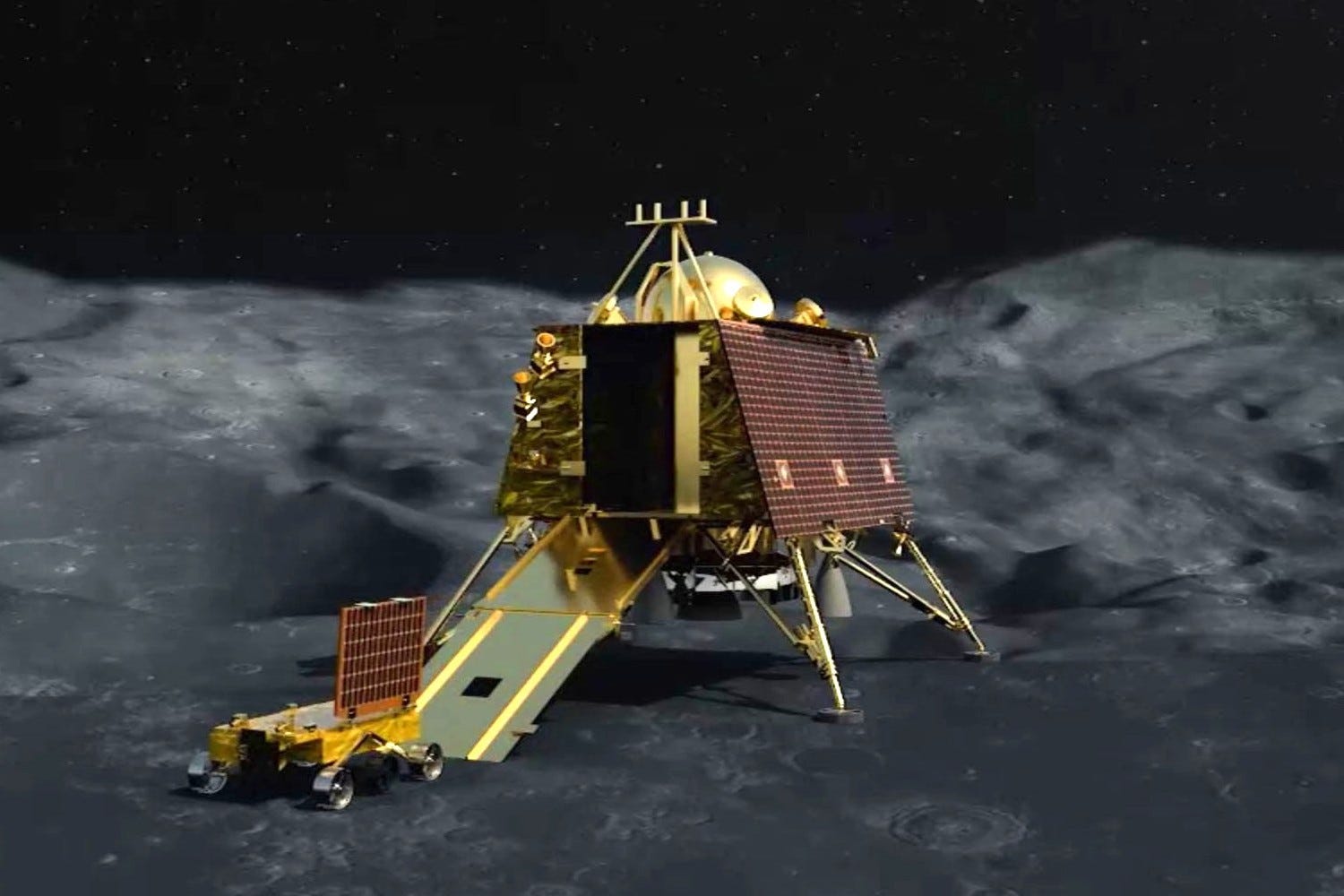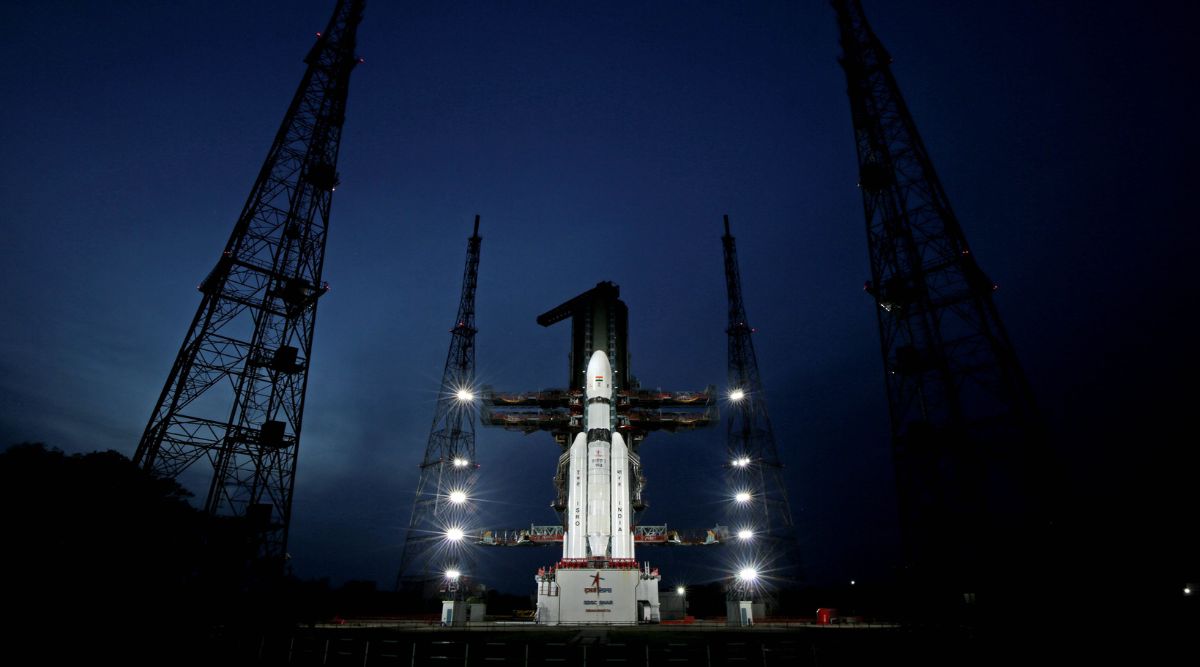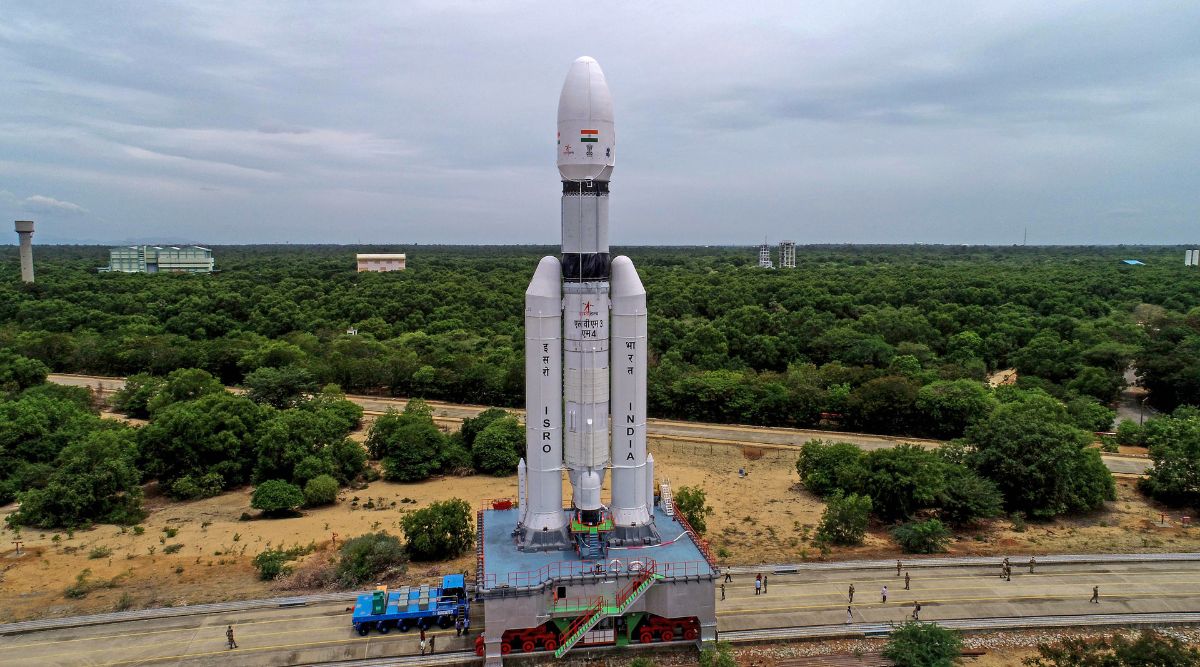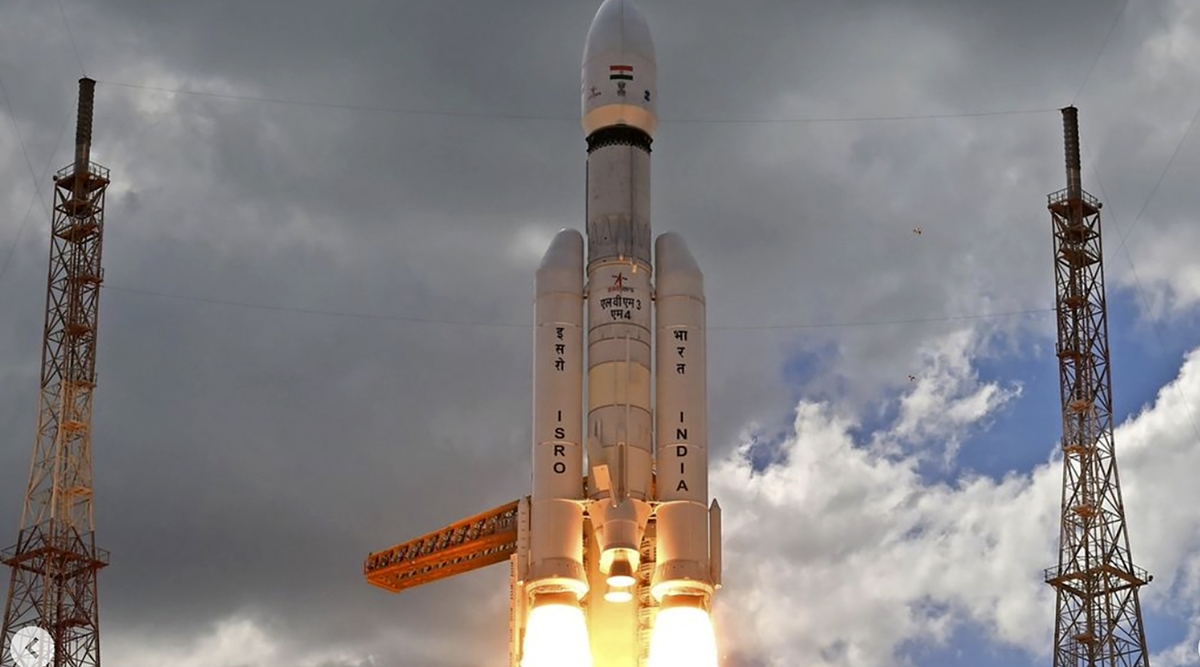Success for Chandrayaan-3: Vikram Completes Moon Hopping and Lands Safely

Success for Chandrayaan-3: Vikram Completes Moon Hopping and Lands Safely
The Chandrayaan-3 mission’s lander, Vikram, has achieved an important milestone by successfully conducting a hop experiment. This indicates progress in the mission’s development and testing phase, bringing India one step closer to its lunar exploration goals. The hop experiment likely involved a controlled vertical movement of the lander, simulating the kind of maneuvers it would need to make during its descent and landing on the lunar surface. This successful test bodes well for the upcoming Chandrayaan-3 mission and India’s continued exploration of the Moon.
ISRO’s Chandrayaan-3 mission aims to build on the lessons learned from the Chandrayaan-2 mission and achieve a soft landing on the Moon. The hop experiment conducted by Vikram is a crucial part of testing its landing and navigation systems. The successful completion of this experiment provides confidence in the lander’s capabilities and brings India closer to its goal of returning to the lunar surface.
Chandrayaan-3, once launched, will carry scientific instruments to study the Moon’s surface and geology, further enhancing our understanding of Earth’s celestial neighbor. ISRO’s commitment to lunar exploration continues to inspire and advance India’s space capabilities on the global stage.
The successful hop experiment conducted by Chandrayaan-3’s lander Vikram is a significant milestone not only for this mission but also for the broader goals of lunar exploration. It demonstrates ISRO’s expertise in designing and executing lunar lander missions, which can have a direct impact on future missions, including those aimed at lunar sample return and potential human missions to the Moon.
By mastering precise landing and navigation techniques, ISRO is building the necessary foundation for more complex lunar missions, including those that involve the safe return of lunar soil and rocks to Earth or support astronauts on lunar expeditions. This accomplishment highlights India’s growing capabilities in space exploration and contributes to the global efforts to further our understanding of the Moon and its potential as a platform for scientific research and human exploration.
The achievements of the Chandrayaan-3 mission’s lander Vikram are indeed commendable. Not only did it complete its soft landing successfully on August 23, but it has also now demonstrated its capability to perform a hop experiment, exceeding its mission objectives. This showcases the robustness and versatility of ISRO’s lunar technology.

The hop experiment is a crucial step toward advancing lunar exploration capabilities, allowing the lander to traverse short distances on the Moon’s surface. These capabilities will be invaluable for future missions, whether they involve scientific exploration, resource utilization, or supporting human activities on the Moon. ISRO’s accomplishments with Chandrayaan-3 contribute to India’s reputation in the field of space exploration and hold promise for even more ambitious lunar missions in the future.
The successful hop experiment by the Chandrayaan-3 mission’s lander Vikram is a significant achievement with several important implications. This achievement demonstrates the capability of the Indian Space Research Organisation (ISRO) to perform controlled maneuvers on the Moon’s surface, enabling more precise and targeted exploration. The ability to hop allows for the examination of different lunar regions, especially those with challenging terrain or obstacles, enhancing India’s lunar exploration efforts.
Moreover, this milestone is of particular significance for future lunar sample return missions. Performing hops on the Moon’s surface will be crucial for collecting diverse samples from various locations, contributing to a deeper understanding of lunar geology and its history. This achievement marks a promising step toward India’s ambitions for lunar exploration and scientific research, positioning it as a key player in lunar exploration endeavors.
After successfully deploying the ramp, ChaSTE, and ILSA, the Chandrayaan-3 lander module, carrying the rover Pragyan, made a soft landing on the lunar surface on August 23. Subsequently, Pragyan was carefully deployed onto the Moon’s surface a few hours later. These actions are integral steps in the lunar exploration mission, allowing the rover to carry out scientific experiments and gather valuable data while exploring the lunar terrain. The precise execution of these maneuvers reflects ISRO’s expertise in lunar exploration and enhances the mission’s overall success and scientific objectives.

Since its soft landing on the lunar surface, the Chandrayaan-3’s Vikram lander has been actively involved in conducting various scientific experiments and measurements. One of the payloads aboard Vikram has made significant observations indicating the presence of plasma near the lunar surface. This finding could offer valuable insights into the moon’s surface environment and help scientists better understand the interactions between the lunar surface and space environment.
Furthermore, the mission’s scientific instruments have detected and confirmed the presence of sulphur in the south polar region of the Moon. The identification of sulphur in this region holds significance for lunar science as it contributes to a deeper understanding of the moon’s geological composition and history. These findings underscore the scientific importance of Chandrayaan-3’s successful soft landing and continued exploration efforts on the lunar surface.
Pragyan, the rover component of the Chandrayaan-3 mission, has achieved significant progress on the lunar surface. It has successfully traversed a distance of over 100 meters from its initial landing point near the Vikram lander. This mobility allows Pragyan to explore and conduct scientific experiments across a broader area of the moon’s surface, gathering valuable data and insights during its mission.
This achievement demonstrates the effectiveness and capabilities of India’s lunar exploration program, contributing to a better understanding of Earth’s celestial neighbor.

ISRO has announced that the Pragyan rover has successfully completed its assignments on the lunar surface. Following its mission objectives, the rover has been safely parked and set into sleep mode. This marks another milestone for the Chandrayaan-3 mission, as it demonstrates the rover’s capabilities and successful execution of its tasks on the moon.
While in sleep mode, Pragyan will conserve energy and remain in a standby state until further instructions or future missions require its activation. The data and findings collected by Pragyan during its operational phase will contribute to our understanding of the lunar environment and aid in future lunar exploration endeavors.
The Pragyan rover’s battery is fully charged, and its solar panel is positioned to receive sunlight during the next lunar sunrise, which is anticipated on September 22. This strategic positioning ensures that the rover will have sufficient power to operate and conduct further experiments when needed.

The successful deployment and functioning of Pragyan on the lunar surface are significant achievements for the Chandrayaan-3 mission and India’s lunar exploration efforts. It opens up opportunities for continued research and exploration on the moon, and the data gathered by the rover will contribute to our understanding of Earth’s celestial neighbor.




